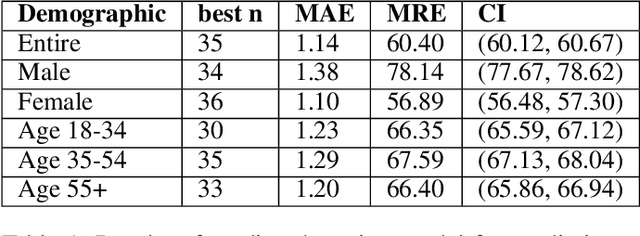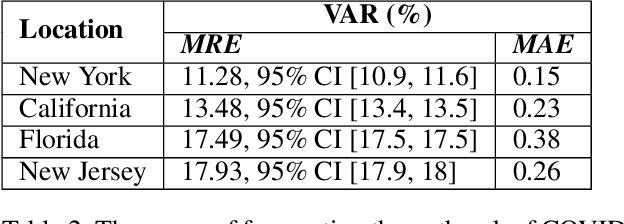T V Sethuraman
COVID-19 Outbreak Prediction and Analysis using Self Reported Symptoms
Dec 21, 2020



Abstract:The COVID-19 pandemic has challenged scientists and policy-makers internationally to develop novel approaches to public health policy. Furthermore, it has also been observed that the prevalence and spread of COVID-19 vary across different spatial, temporal, and demographics. Despite ramping up testing, we still are not at the required level in most parts of the globe. Therefore, we utilize self-reported symptoms survey data to understand trends in the spread of COVID-19. The aim of this study is to segment populations that are highly susceptible. In order to understand such populations, we perform exploratory data analysis, outbreak prediction, and time-series forecasting using public health and policy datasets. From our studies, we try to predict the likely % of the population that tested positive for COVID-19 based on self-reported symptoms. Our findings reaffirm the predictive value of symptoms, such as anosmia and ageusia. And we forecast that % of the population having COVID-19-like illness (CLI) and those tested positive as 0.15% and 1.14% absolute error respectively. These findings could help aid faster development of the public health policy, particularly in areas with low levels of testing and having a greater reliance on self-reported symptoms. Our analysis sheds light on identifying clinical attributes of interest across different demographics. We also provide insights into the effects of various policy enactments on COVID-19 prevalence.
 Add to Chrome
Add to Chrome Add to Firefox
Add to Firefox Add to Edge
Add to Edge